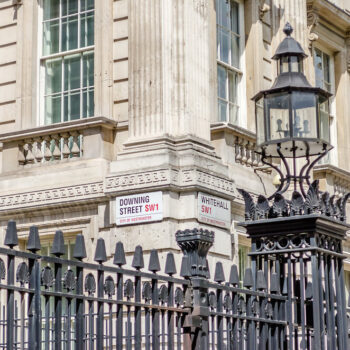Energy efficiency investment must be boosted, according to a major new assessment launched today of the UK’s future infrastructure needs. The report, launched by the National Infrastructure Commission (NIC), sets out its view of the UK’s infrastructure needs for the decades ahead. It positions energy efficiency as critical to delivering a low-cost energy system alongside falling-cost renewables and regardless of the avenues pursued to decarbonise the UK’s heat supply.
What is the NIC’s energy efficiency target and how does it compare?
The NIC has called on the Government to ensure that regulation and funding is put in place to increase the rate of insulation measures installed in UK homes to 21,000 a week by 2020 and maintain this to 2035. This is broadly in line with the Clean Growth Strategy’s ambition for all homes to achieve an energy rating of C by then.
The Committee on Climate Change’s recent annual report found that insulation rates had fallen by 95% in UK homes since 2012. The current Energy Company Obligation – which accounts for most insulation measures being installed – has delivered at a rate of 2,500 per week. The target set by the NIC means eight times more insulation measures would need to be installed each week than the Energy Company Obligation currently delivers.
By 2050, according to the NIC’s underlying analysis, energy demand for heat in homes should have halved compared to today due to energy efficiency improvements – playing a large part in ensuring households face no increase in energy costs in a decarbonised energy system – regardless of whether the transformation of the UK’s heat supply is ultimately led by the deployment of low carbon hydrogen, or potentially zero carbon heat pumps.
How is it to be funded?
The NIC calls for energy efficiency to be made a core part of the Government’s energy infrastructure plan and for £3.8 billion of public capital funds to be allocated to making social housing energy efficient to 2030 – around £345m per year. This would help ensure that the Government reached its target to bring social housing up to an energy rating of C by this time.
In addition, it sets out an illustrative energy efficiency programme for low income private housing, funded via household energy bills, above and beyond the £640m per year the Government has confirmed will be invested by the Energy Company Obligation (or a successor scheme) out to 2028. This would average an extra £175m per year to 2030.
Taken together, existing and newly proposed investment from public capital funds and energy bills would amount to approximately £1.2bn per year – up from the £0.7bn now invested publicly in energy efficiency across the UK. To 2035, approximately £1.7bn of investment per year from these sources is needed to achieve the Clean Growth Strategy’s ambition, combined with £3.5bn per year from individual homeowners and landlords.
The NIC recommends a tightening of private-rented sector minimum energy performance standards over time – with a timetable for this by the end of 2018 – and trials for incentives to engage homeowners in improving their homes’ energy efficiency. This is intended to drive landlord and homeowner investment in energy efficiency.
However, the NIC stops short of spelling out in full how the target of 21,000 insulation installations a week by 2020 should be met. Public investment – whether from capital funds or funded via energy bills – would still need to increase beyond the £1.2bn proposed to £1.7bn per year. The extra £0.5bn must both expand support for low income households and incentivise more homeowners to invest in energy efficiency, through measures such as 0% interest loans and Stamp Duty rebates – in this way fostering a sustainable mass market for energy efficiency as previously recommended by the Green Finance Taskforce and the Energy Efficiency Infrastructure Group.
In conclusion…
The National Infrastructure Commission has made it crystal clear that every viable energy infrastructure pathway is a high efficiency pathway. Energy efficiency is the ‘green gold’ of the energy infrastructure system that will keep energy bills low and ensure decarbonisation of the energy system means financial common sense.
The £3.8 billion recommended for a social housing energy efficiency programme can pump prime the market. An expanded Energy Company Obligation will help more low income households. Stronger regulation of rented properties and trials to incentivise homeowners will see more private investment in energy efficiency. But because the NIC’s remit means its Assessment emphasises the ‘what’ over the ‘how’, the NIC’s specific recommendations do not add up to the 21,000 measures per week target.
Therefore, the best next step for Government is to develop a comprehensive and integrated National Infrastructure Strategy in response to the NIC’s full set of recommendations within the next six months. As part of this, a detailed action plan to boost energy efficiency for all UK homes over the long term is needed, building on foundations laid by the Clean Growth Strategy, and initial steps that must be taken at this year’s Budget in autumn.


